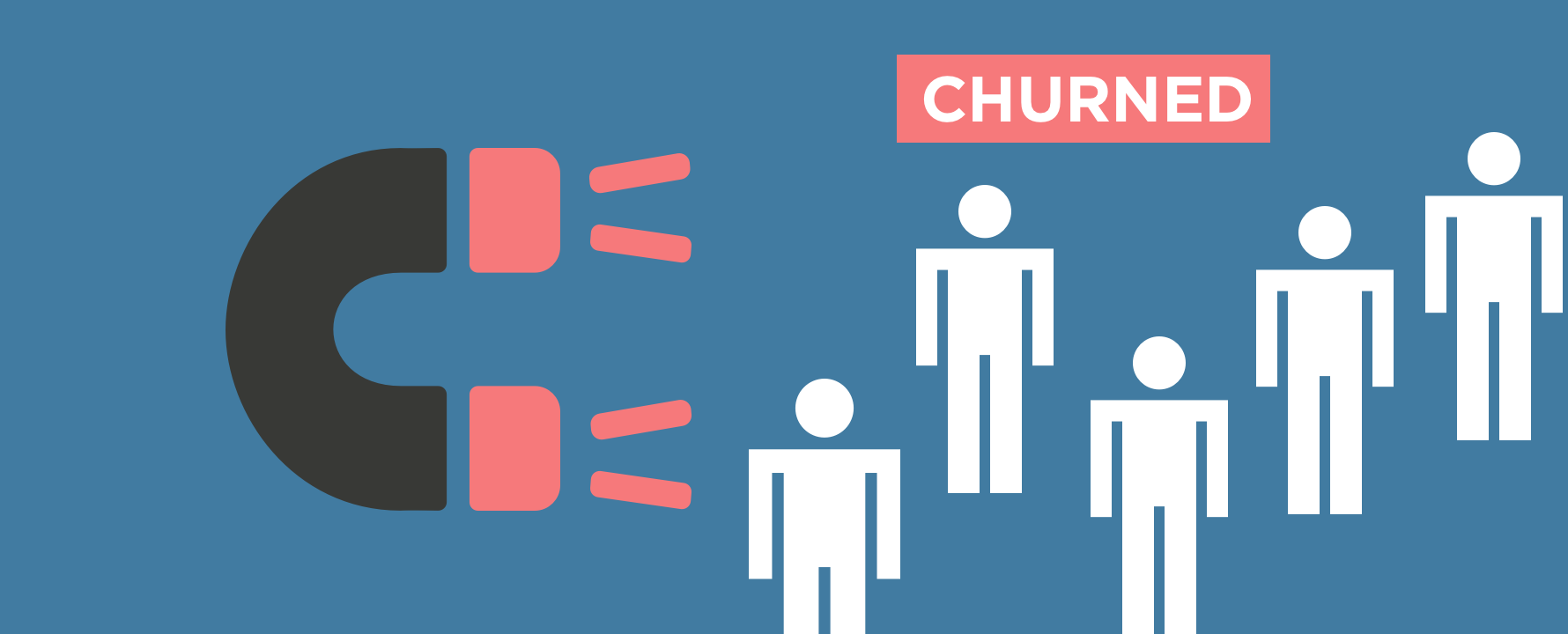When there is high churn, a lot of effort is spent winning lost customers back, but is that the right approach?
The old way: Contact every churned customer with a win-back offer
Many companies have retention teams in place, whose job is to contact customers who have already decided to leave. The first thing they will do is find out why the customer left. This typically involves searching transaction records for clues, comments or feedback that may provide an idea of why a customer has churned. Then they will contact the customer and ask them what went wrong. Finally, they will try to put together a win-back offer that addresses the issue that led the customer to churn.
According to research from Harvard Business Review, a common mistake many companies make is to try and regain every lost customer. This can lead to a significant waste of marketing resources. It’s far more efficient to focus on people whose prior behaviour suggests a predisposition to come back. The research found that customers who have referred others, who have never complained, or who have had complaints resolved satisfactorily, offer the best opportunities. Those who churn or cancel because of price are more likely to come back than those who dissatisfied with poor service, while those who sited both are the least likely to come back.
Old Result: Too costly and rarely works
You don’t necessarily want to win back every customer, either. Winning back customers who are likely to churn again in one or two months will eat away at preciously limited marketing resources for no profit.
Going to the effort of researching and contacting every customer is a scatter gun approach that rarely works. It typically entails offering a substantial discount, which limits the viability of the entire exercise. There are now better ways to analyse and predict customer behaviour that allows companies to take action before a customer churns.
New way: Identify and contact customers before they churn
The best and most cost-effective means of winning back a customer is to prevent the situation of them leaving in the first place. If you can predict when someone is about to churn, you can reach out and make an offer before they leave, which is far less costly and time consuming than contacting every customer who has already left.
Based on the data you have collected about your customers, advanced AI analytics is now capable of making accurate predictions of which customers are likely to churn. Companies then have the opportunity to reach out to each customer with a relevant and personalised message.
New Results: Better prediction means greater success
Rather than contacting people after they have left, it costs companies far less if they can identify and contact those customers before they churn. Using AI, retention teams can decide who is worth contacting and what message to use to reach the customer before the customer decides to leave. Customer specific information allows messages to be personalised, thereby improving success and convincing the customer you care.
Unique useful insight (UUI)
Proactively reaching out to at-risk customers is cheaper and more effective than reactive win-back.
Evidence:
https://hbr.org/2016/03/winning-back-lost-customers
In a recent trial, it was shown customers could be retained and churn reduced by 23% across the base. There were some treatments that were shown to reduce churn by 60% against a control group.
We at SmartMeasures are helping our clients identify and contact at-risk customers before they leave which is a far more cost effective way to operate.
If you would like to know more, get in touch.


